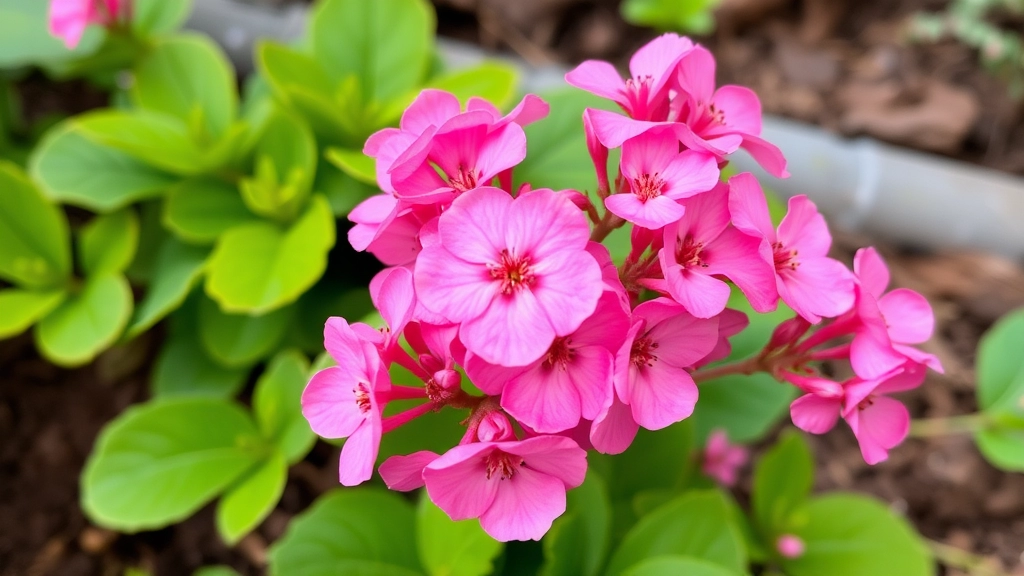Kalanchoe Pink Butterflies Care Guide
If you’re looking to add a splash of colour to your succulent collection, Kalanchoe Pink Butterflies is a must-have. This unique plant, known for its vibrant pink plantlets that resemble butterflies, is not only eye-catching but also relatively easy to care for. In this guide, I’ll walk you through the ideal growing conditions, soil and potting recommendations, and watering guidelines to keep your Kalanchoe Pink Butterflies thriving.
Basic Requirements
First, let’s talk about the basics. Kalanchoe Pink Butterflies thrive in well-draining soil and require moderate watering to prevent root rot. Ensuring they get plenty of indirect sunlight will keep those pink plantlets vibrant.
Propagation and Pest Management
Whether you’re propagating through leaf or stem cuttings, or managing common pests, this guide covers everything you need to know for successful care. So, let’s dive in and make sure your Kalanchoe Pink Butterflies flourish!
Are you struggling to keep your Kalanchoe ‘Pink Butterflies’ thriving?
Understanding its ideal growing conditions can make all the difference.
Kalanchoe ‘Pink Butterflies’ is a unique succulent that flourishes when provided with the right environment.
## Key Factors for Optimal Growth
– **Light**: This plant loves bright, indirect sunlight. A south or west-facing window is ideal.
– **Temperature**: It prefers temperatures between 18°C and 24°C. Avoid exposing it to frost. For more details, check out the [ideal temperature for Kalanchoe blossfeldiana growth](https://planthq.org/ideal-temperature-for-kalanchoe-blossfeldiana-growth/).
– **Humidity**: Low humidity levels suit this succulent best, making it perfect for indoor environments.
## Soil and Drainage
– **Soil Type**: Use a well-draining cactus or succulent mix.
– **Potting**: Ensure the pot has drainage holes to prevent water accumulation. Learn more about the [complete guide to Kalanchoe paddle plant care](https://planthq.org/complete-guide-to-kalanchoe-paddle-plant-care/).
## Watering
– **Frequency**: Allow the soil to dry out completely between waterings.
– **Technique**: Water thoroughly, but avoid letting the plant sit in water.
Soil and Potting Recommendations
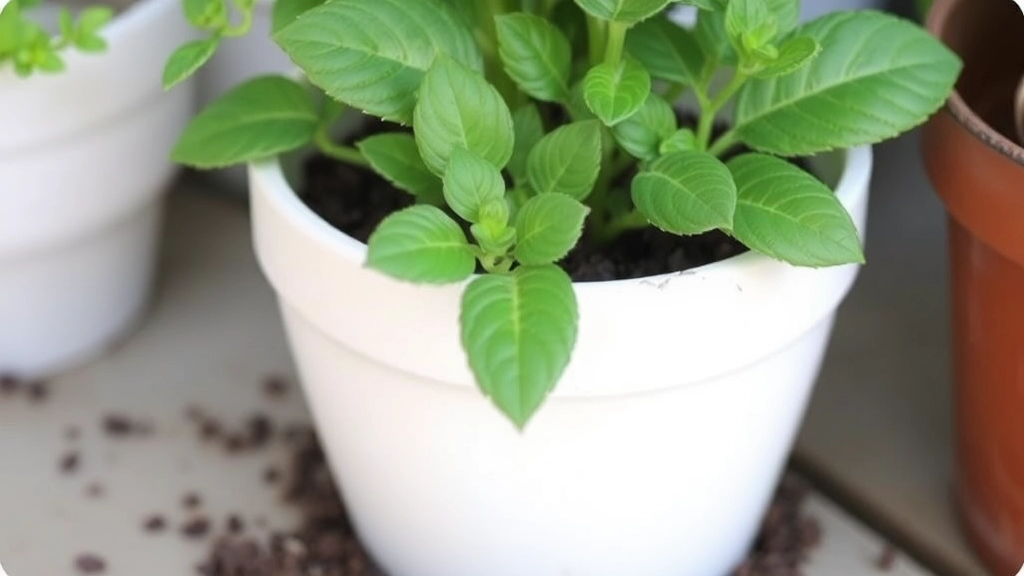
So, you’ve got your Kalanchoe ‘Pink Butterflies’ and you’re wondering what kind of soil it needs, right?
Well, let’s dive into that!
Ideal Soil Type
Kalanchoe ‘Pink Butterflies’ thrives in well-draining soil.
- Cactus or Succulent Mix: This is a fantastic option as it’s designed to drain quickly.
- Add Perlite or Sand: Mixing in some perlite or coarse sand can improve drainage even further.
- pH Level: Aim for a slightly acidic to neutral pH (around 6.0 to 7.0).
Potting Tips
Choosing the right pot is just as important as the soil.
- Drainage Holes: Always opt for a pot with drainage holes. This helps prevent water from sitting at the bottom, which can lead to root rot.
- Size Matters: A pot that’s too large can hold excess moisture. Go for a pot that’s just a size or two bigger than the root ball.
- Repotting: If you notice your plant outgrowing its pot, it’s time to repot. Spring is the best time for this.
Practical Example
I once had a friend who used regular potting soil for her succulents.
Guess what? They didn’t last long!
Switching to a proper succulent mix made all the difference.
Watering Guidelines to Prevent Root Rot
When caring for Kalanchoe ‘Pink Butterflies’, one of the most pressing concerns for many plant enthusiasts is how to effectively manage watering to prevent root rot.
Understanding Root Rot Risks
Root rot is a common issue that arises from overwatering or poor drainage. It can quickly lead to the decline of your beloved plant. Here are some essential tips to keep your Kalanchoe thriving:
- Check the Soil Moisture: Always assess the soil before watering. Stick your finger about an inch into the soil; if it feels dry, it’s time to water. If it’s still moist, hold off for a few days.
- Water Thoroughly but Sparingly: When you do water, ensure that you give your plant a good soak. Water until it drains from the bottom of the pot, but avoid letting it sit in excess water.
- Use Well-Draining Soil: A soil mix designed for succulents is ideal. This will help excess moisture evaporate quickly, reducing the risk of rot.
- Choose the Right Pot: Ensure your pot has drainage holes. This allows any excess water to escape, keeping the roots dry.
- Seasonal Adjustments: During the growing season (spring and summer), Kalanchoe may need more frequent watering. In contrast, reduce watering in the dormant months (autumn and winter) when the plant’s growth slows.
By following these guidelines, you can significantly reduce the risk of root rot and ensure your Kalanchoe ‘Pink Butterflies’ remains healthy and vibrant. For more detailed care tips, check out our care guide for Pink Butterflies Kalanchoe. Additionally, if you’re interested in learning about other varieties, our top Kalanchoe succulent varieties and care tips might be helpful.
Light Requirements for Optimal Growth
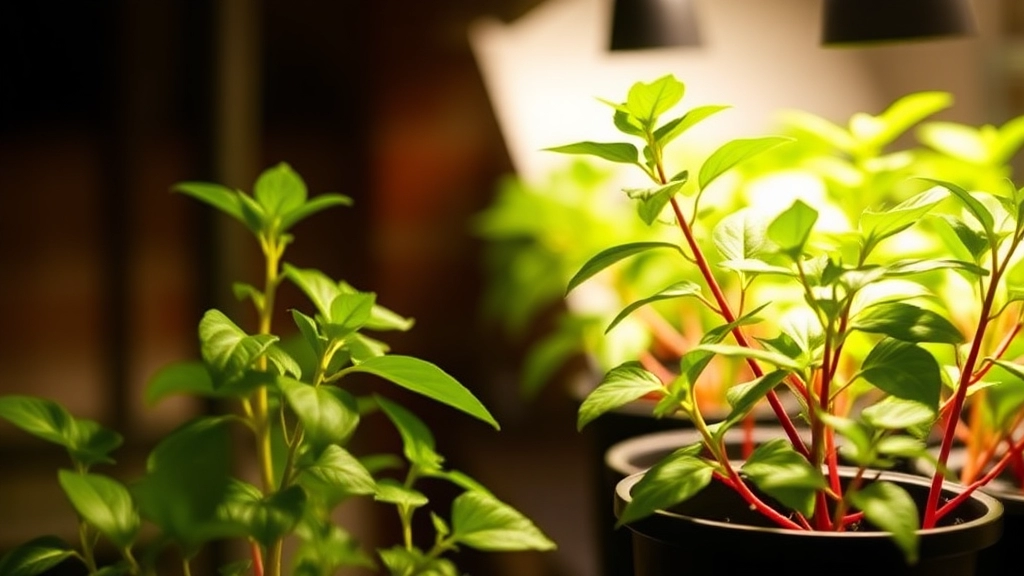
When it comes to nurturing Kalanchoe ‘Pink Butterflies’, understanding its light requirements is crucial for ensuring vibrant growth and stunning blooms.
Many plant enthusiasts often wonder, “How much light does my Kalanchoe need?”
Optimal Light Conditions:
- Bright, Indirect Light: Kalanchoe ‘Pink Butterflies’ thrives best in bright, indirect sunlight. A south or west-facing window is ideal.
- Avoid Direct Sunlight: While these plants enjoy light, too much direct sunlight can scorch their delicate leaves, leading to unsightly brown patches.
- Supplemental Lighting: If natural light is limited, consider using grow lights. This can help maintain the plant’s health, especially during darker months.
Signs of Inadequate Light:
- Leggy Growth: If your Kalanchoe starts to stretch towards the light, it’s a clear sign it needs more brightness.
- Faded Colour: Leaves losing their vibrant hues can indicate insufficient light.
- Reduced Flowering: If blooming seems sparse, it may be time to reassess its light exposure.
Seasonal Considerations:
- Adjust for Seasons: During winter months, you may need to reposition your plant to ensure it receives adequate light as days shorten.
- Monitor Growth: Regularly check your plant’s growth pattern and adjust its location as needed.
Propagation Methods and Techniques
When considering how to propagate Kalanchoe ‘Pink Butterflies’, many plant enthusiasts wonder about the best methods to ensure success. Propagation is not only a rewarding process but also a great way to expand your collection or share with friends.
Leaf Cuttings
One of the most popular methods for propagating Kalanchoe ‘Pink Butterflies’ is through leaf cuttings. Here’s how to do it:
- Select Healthy Leaves: Choose mature, healthy leaves from the parent plant.
- Cut and Dry: Using a clean, sharp knife, cut the leaf close to the stem. Allow the cut end to dry for a few days until a callous forms.
- Planting: Place the dried leaf in well-draining soil, burying just the cut end.
- Water Sparingly: Mist the soil lightly, but avoid overwatering.
Stem Cuttings
Stem cuttings can also be effective for propagation. Follow these steps:
- Choose a Stem: Look for a healthy stem with several leaves.
- Make the Cut: Cut the stem just below a leaf node.
- Let it Callous: As with leaf cuttings, allow the cut end to dry for a few days.
- Plant: Insert the calloused end into soil, ensuring it’s stable.
- Care: Water lightly and keep in a bright location.
Offsets
Kalanchoe ‘Pink Butterflies’ produces offsets or “pups” that can be separated from the parent plant.
Common Pests and Disease Management
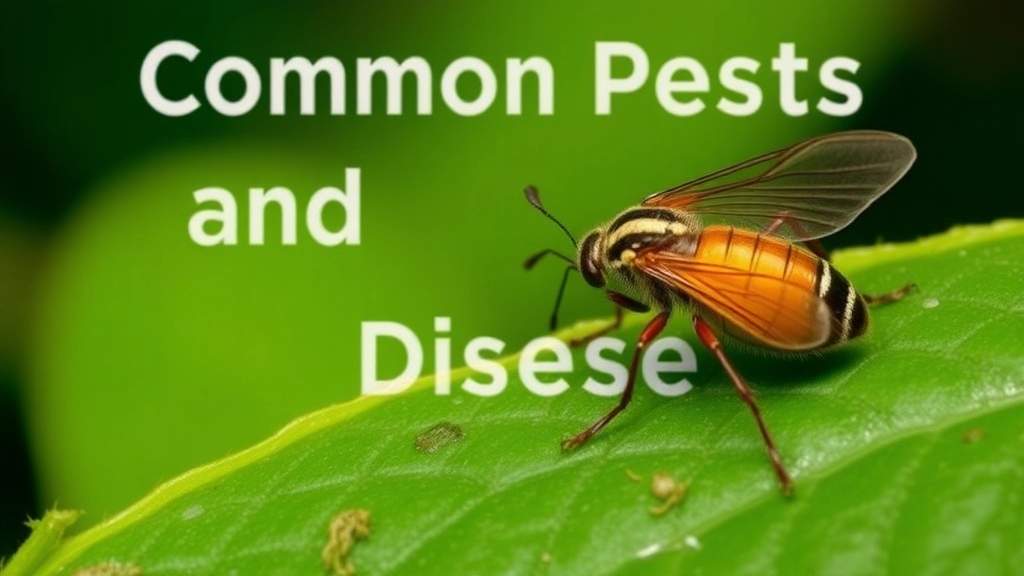
So, you’ve got your Kalanchoe ‘Pink Butterflies’ thriving, but what happens when those pesky pests show up uninvited?
Identifying Common Pests
First off, let’s chat about the usual suspects that might be after your plant:
- Mealybugs: These little white fluff balls love to hide in the leaf axils and can sap your plant’s strength.
- Spider Mites: Tiny and often overlooked, they leave behind fine webbing and can cause yellowing leaves.
- Aphids: These green or black bugs can cluster on new growth, sucking the life out of your plant.
- Scale Insects: They look like small bumps on the leaves and can be tricky to spot.
Disease Woes
Now, it’s not just pests you need to worry about. Kalanchoes are prone to a few diseases too:
- Root Rot: Overwatering is the main culprit here. Yellowing leaves and a mushy stem are telltale signs.
- Leaf Spot: Dark spots on leaves can indicate fungal infections, often worsened by high humidity.
Quick Fixes and Prevention Tips
Here’s how to keep your Kalanchoe healthy and pest-free:
- Regular Checks: Inspect your plant weekly for any signs of pests or disease.
- Neem Oil: A natural pesticide that works wonders against most pests. Just mix it with water and spray!
- Good Airflow: Ensure your plant isn’t crowded. Good airflow helps prevent diseases.
- Proper Watering: Stick to a watering schedule that allows the soil to dry out between drinks to avoid root rot.
When to Act
If you spot any pests, don’t wait!
- Isolate the Plant: Keep it away from your other plants to prevent the spread.
- Manual Removal: For mealybugs and scale, a cotton swab dipped in alcohol can work wonders.
- Fungicide: If you’re dealing with leaf spot, a fungicide can help clear it up.
When caring for your Kalanchoe ‘Pink Butterflies’, you might wonder how to keep it thriving and vibrant. Fertilization plays a crucial role in ensuring your plant receives the nutrients it needs to flourish.
Understanding Fertilizer Types
– **Balanced Fertilizer**: A balanced fertilizer with equal parts nitrogen, phosphorus, and potassium (N-P-K) is ideal. Look for a ratio like 10-10-10.
– **Diluted Liquid Fertilizer**: During the growing season, a diluted liquid fertilizer can be beneficial. Use it at half strength every four to six weeks.
Timing Your Fertilization
– **Growing Season**: Fertilize from spring to early autumn when the plant is actively growing. This is when it benefits most from additional nutrients.
– **Dormant Period**: In winter, reduce or stop fertilization. The plant’s growth slows, and it doesn’t require as many nutrients.
Application Tips
– **Even Distribution**: Apply fertilizer evenly around the base of the plant to prevent root burn.
– **Watering After Fertilization**: Water the plant lightly after applying fertilizer to help it absorb nutrients effectively.
Signs of Nutrient Deficiency
– **Yellowing Leaves**: If the leaves start turning yellow, it may indicate a lack of nitrogen.
– **Poor Growth**: Stunted growth can signal a need for more nutrients.
For more detailed guidance, you might want to check out the [care tips for Kalanchoe Pink Butterflies](https://planthq.org/care-tips-for-kalanchoe-pink-butterflies-succulent/) and explore [how to propagate Kalanchoe Pink Butterflies](https://planthq.org/how-to-propagate-kalanchoe-pink-butterflies-stepbystep-guide/) to ensure your plant thrives.
Temperature and Frost Protection for Kalanchoe ‘Pink Butterflies’
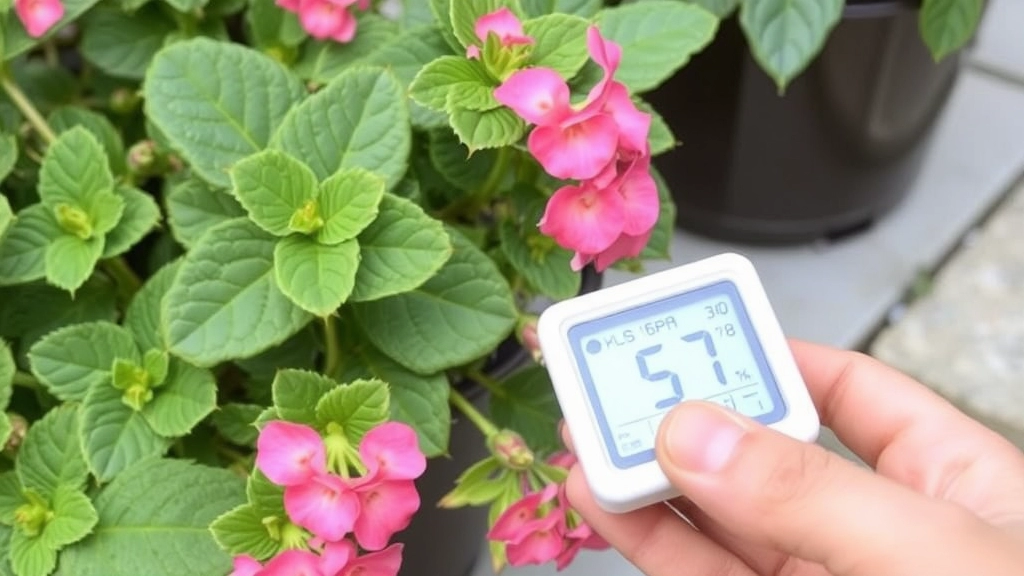
Ever wondered how to keep your Kalanchoe ‘Pink Butterflies’ thriving when the temperatures start to dip?
These charming succulents love warmth but can be quite sensitive to cold.
Ideal Temperature Range
- Daytime: Aim for 20-25°C (68-77°F).
- Nighttime: A cooler 15-18°C (59-65°F) is just fine.
Frost Protection Tips
Kalanchoe ‘Pink Butterflies’ is not frost-tolerant, so if you live in a chilly area, here’s how to keep them safe:
- Bring Indoors: As soon as the temperatures drop below 10°C (50°F), it’s time to move them inside.
- Use a Greenhouse: If you have one, it’s a great way to maintain a warm environment.
- Cover with Cloth: On particularly cold nights, draping a cloth over your plants can provide extra warmth.
Signs of Cold Stress
Keep an eye out for these signs that your plant is feeling the chill:
- Wilting Leaves: If leaves start drooping, they might be too cold.
- Discoloration: Look for any browning or blackening of leaves.
Unique Characteristics and Adaptations of Kalanchoe ‘Pink Butterflies’
When considering the unique characteristics of Kalanchoe ‘Pink Butterflies’, many enthusiasts wonder what sets this succulent apart from others.
Distinctive Features
Kalanchoe ‘Pink Butterflies’ is renowned for its striking foliage and vibrant blooms.
- Leaf Shape: Its leaves are uniquely shaped, resembling delicate butterflies, which adds an artistic flair to any garden or indoor space.
- Flowering: This variety produces clusters of small, tubular flowers that bloom in a soft pink hue, providing a beautiful contrast against its green leaves.
Adaptations for Survival
Understanding the adaptations of Kalanchoe ‘Pink Butterflies’ helps in appreciating its resilience.
- Water Storage: Like many succulents, it has the ability to store water in its leaves, allowing it to thrive in arid conditions.
- Drought Resistance: This plant can withstand long periods without water, making it an ideal choice for busy gardeners or those new to plant care.
Environmental Flexibility
Kalanchoe ‘Pink Butterflies’ showcases remarkable flexibility in various environments.
- Indoor and Outdoor Growth: Whether you place it in a sunny window or in your garden, it flourishes in both settings as long as the light conditions are met.
- Soil Versatility: It adapts well to different soil types, provided they offer good drainage.
For more on how to propagate this beautiful plant, check out our guide on propagating Kalanchoe ‘Mother of Thousands’. Additionally, if you’re interested in other pink-flowered varieties, our ultimate guide to growing Kalanchoe pink flowers is a must-read.
FAQs about Kalanchoe ‘Pink Butterflies’
What type of soil is best for Kalanchoe ‘Pink Butterflies’?
Kalanchoe ‘Pink Butterflies’ thrives in well-draining soil. A cactus or succulent mix is ideal. You can also add perlite or coarse sand to improve drainage. Aim for a slightly acidic to neutral pH, around 6.0 to 7.0.
What kind of pot should I use for Kalanchoe ‘Pink Butterflies’?
Choose a pot with drainage holes to prevent water from sitting at the bottom, which can cause root rot. The pot should be just a size or two bigger than the root ball to avoid excess moisture.
How much light does Kalanchoe ‘Pink Butterflies’ need?
Kalanchoe ‘Pink Butterflies’ thrives in bright, indirect sunlight. A south or west-facing window is ideal. Avoid direct sunlight as it can scorch the leaves. If natural light is limited, consider using grow lights.
What are the signs that my Kalanchoe ‘Pink Butterflies’ is not getting enough light?
Signs of inadequate light include leggy growth, faded leaf color, and reduced flowering. If you notice these symptoms, consider repositioning your plant to a brighter location.
What are common pests that affect Kalanchoe ‘Pink Butterflies’?
Common pests include mealybugs, spider mites, aphids, and scale insects. Regularly inspect your plant for these pests to catch any infestations early.
How can I prevent and manage pests on my Kalanchoe ‘Pink Butterflies’?
Inspect your plant weekly, use neem oil as a natural pesticide, ensure good airflow, and stick to a proper watering schedule. If pests are detected, isolate the plant, manually remove pests, and consider using fungicides for diseases like leaf spot.
What temperatures are ideal for Kalanchoe ‘Pink Butterflies’?
The ideal daytime temperature range is 20-25°C (68-77°F), while nighttime temperatures should be around 15-18°C (59-65°F). These plants are not frost-tolerant.
How can I protect my Kalanchoe ‘Pink Butterflies’ from frost?
Bring the plant indoors when temperatures drop below 10°C (50°F). Using a greenhouse or covering the plant with cloth on cold nights can also provide extra warmth.
What are the signs that my Kalanchoe ‘Pink Butterflies’ is experiencing cold stress?
Signs of cold stress include wilting leaves and discoloration, such as browning or blackening of the leaves. If you notice these symptoms, take steps to warm your plant immediately.
References
-
How to Grow and Care for Kalanchoe ‘Pink Butterflies’
-
Kalanchoe ‘Pink Butterflies’ – World of Succulents
-
Kalanchoe Pink Butterflies: Care and Growing Guide
